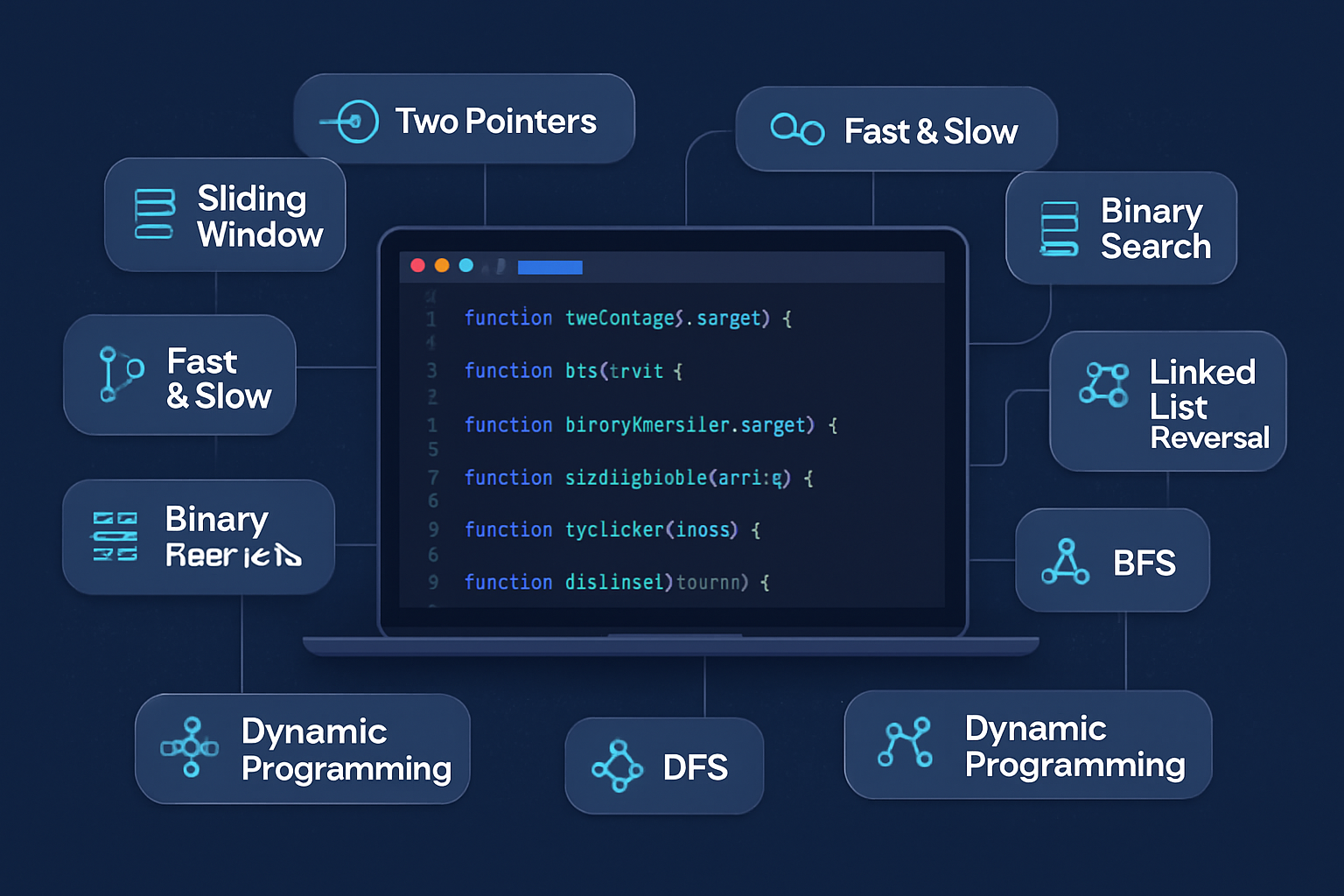· career · 8 min read
Mastering the Art of Side Projects: Building Your Unique Portfolio
Learn how to pick, build, document, deploy, and present JavaScript side projects that show creativity, engineering judgment, and real-world problem-solving-so you stand out to employers.

What you’ll get from this article
By the end you’ll know how to pick the right side projects, structure and ship them with professional polish, and present them in a way hiring managers actually remember. You’ll walk away with a repeatable plan, a checklist to finish projects, and practical examples geared for JavaScript-focused portfolios.
Short version: one high-quality, well-documented project will take you farther than five unfinished ones. Finish and polish. Then tell the story.
Why side projects matter (more than code samples)
Employers look for three things beyond syntax correctness: problem-solving, product sense, and craft. Side projects let you demonstrate all three in a single artifact.
- They show curiosity - you built something because you cared.
- They show process - architecture, tradeoffs, and testing choices are visible in commits and documentation.
- They show impact - a deployed project with real users or metrics is persuasive in interviews.
A side project is not just a demo: it’s a narrative. It tells a recruiter who you are as a developer.
Choosing the right project
Pick projects that let you highlight the skills you want to be hired for, and that can be shipped to completion in a reasonable time.
Questions to ask when choosing:
- What skill do I want to showcase? (React state management, Node APIs, real-time websockets, performance tuning, accessibility)
- Who is the user and what problem are you solving? (Even toy problems should have a user and a pain point.)
- Is the scope finishable in 2–12 weeks?
- Can the project be deployed and demoed easily?
Project ideas for JavaScript portfolios:
- Interactive data visualizer with D3 (shows data handling + DOM performance)
- Full-stack task app with authentication, RBAC, and offline sync (PWA) - showcases frontend + backend + deployment
- Real-time collaborative editor or chat using WebSockets/Socket.io (shows concurrency, race conditions)
- Browser extension that solves a tiny UX pain (shows browser APIs and packaging)
- Component library with Storybook and unit tests (shows design systems and test discipline)
- CLI tooling in Node.js (shows backend JS and scripting skills)
Choose one that excites you. Passion gets you through the finishing grind.
Plan first: MVP, scope, and milestones
Successful projects are planned like tiny products. Use this simple framework:
- Define the minimum viable product (MVP): core feature(s) that deliver the user value.
- Define an extension roadmap: nice-to-have features to add after MVP.
- Break the MVP into weekly milestones.
- Timebox: 2–12 weeks per project depending on complexity.
Example 8-week plan (high level):
- Week 1: User flows, wireframes, tech stack, repo setup
- Week 2–3: Core frontend + backend endpoints
- Week 4: Authentication + persistence
- Week 5: Tests, accessible UI improvements
- Week 6: Polish UX, performance optimizations
- Week 7: Deploy and analytics
- Week 8: Documentation, README, screencast, blog post
This keeps focus on finishing rather than feature creep.
Choose technologies strategically
Match the project to the job you want, but avoid novelty for novelty’s sake.
Guidelines:
- Use one mainstream frontend framework (React, Vue, Svelte) if you want a frontend role.
- Use Node/Express, Fastify, or Deno for backend roles - or serverless functions (Vercel, Netlify Functions) for easy deployment.
- Use PostgreSQL or a managed DB for production-like experience when persistence matters.
- Add one advanced piece: GraphQL, WebSockets, WebRTC, or service workers - but only if it adds real value.
Pick tooling that helps you ship: testing frameworks (Jest, Vitest), linters (ESLint), formatters (Prettier), bundlers (Vite), and CI (GitHub Actions).
Build like a pro: architecture and engineering practices
Treat a side project like a small product - not a playground. That distinction shows.
- Start with small, testable components.
- Keep the architecture modular. Favor composition over monoliths.
- Add automated tests (unit + at least some integration or E2E).
- Use typed JavaScript when appropriate (TypeScript or JSDoc). Types are a sign of production discipline.
- Follow git hygiene: small commits, clear messages, and feature branches. Your commit history tells a story.
Example commit message style:
- feat(auth): add JWT refresh flow
- fix(ui): resolve race condition on list loading
- docs(readme): add deployment and usage examples
Documentation and storytelling - the part most people skip
A recruiter who spends 30 seconds on your repo should understand the what, why, and how.
Essential README sections (concise and scannable):
- One-line project elevator pitch
- Problem statement and target user
- Key features and tech stack
- Demo (GIF/video) and live link
- Local setup (how to run) - copy/paste commands
- Tests/coverage instructions
- Design decisions and tradeoffs (a short section)
- License and contribution notes
Provide a quick demo GIF at the top. Recruiters want to see the app in action without running it.
Sample README header (copy/paste friendly):
One-line: "BudgetBee - a lightweight PWA for tracking personal budgets with offline sync."
Why: "I built this to explore PWA offline sync and to demonstrate a small, polished UX for daily budgeting."
Live demo: https://budgetbee.example.com
Tech: React, TypeScript, IndexedDB, Workbox, Vercel
Quick start:
git clone https://github.com/you/budgetbee.git
cd budgetbee
npm install
npm run devDeploy and demo - make it easy to evaluate
A project that lives only in your local environment is ten times less persuasive.
Deployment tips:
- Use Vercel or Netlify for frontends - instant deploy from GitHub. Vercel and Netlify
- Deploy serverless functions or small backend to Render / Railway / Heroku / DigitalOcean
- If you use a database, consider free tiers on Supabase or PlanetScale for a production-like stack
- Add a demo page with an embedded video or interactive playground
Don’t forget analytics so you can share usage numbers. A small metric (e.g., time on site, number of test users) is compelling.
Presenting: portfolio site, case studies, and interview-ready storytelling
Your portfolio is the elevator pitch for your projects. Make it scannable and story-driven.
Portfolio essentials:
- A clean landing page with short tagline and links to 3 strongest projects
- For each project: 1–2 screenshots, tech stack, short problem→solution bullet points, and a prominent link to the repo and live demo
- A deeper case study page for your best project that includes: context, goals, constraints, architecture diagram, key challenges, metrics, and what you learned
- Contact information and a short bio that highlights the kind of work you want
When talking about projects in interviews, follow this formula: Context → Your role & choices → Tradeoffs → Outcome & metrics → What you learned. Keep your strongest technical insight for the finale of the story.
Promotion: get your project noticed
- Write a short blog post or dev log describing the high-level arc and a hard technical problem you solved. Post it on your portfolio, Dev.to, or Medium.
- Share a short video or GIF on Twitter/X and LinkedIn with a concise message about the value.
- Submit to relevant communities: Product Hunt (if user-facing), r/webdev, or relevant Discord communities.
- Open-source components? Tag issues with good labels and add contribution guidelines.
Keep it maintained and measurable
Projects age quickly. Either mark them as archived or keep them maintained.
Maintenance checklist:
- Keep dependencies updated; fix security alerts in GitHub
- Update README with any important changes
- Renew demos and data if external APIs change
- Track simple metrics: CI status, test coverage, uptime, user count
Metrics you can report during interviews:
- Number of unique visitors to demo
- Time-on-site or core action completion rate
- Number of stars or forks for open-source projects
Numbers are persuasive because they quantify impact.
A finishing checklist (before you send a link to recruiters)
- Live demo works and is reachable
- README contains elevator pitch, install, and live demo
- Project contains tests and CI badge
- Repo has a clean commit history and clear license
- Portfolio shows project with 1–2 screenshots and 2–4 bullet points
- Short screencast (30–90s) showing core flows
- Blog post or case study explaining a non-trivial decision
Finish these and your project becomes a story instead of just code.
Examples of scalable project narratives (how to tell the story)
- Real-time chat app
- Context: “I wanted to explore real-time sync and presence.”
- Role: “Built frontend in React, backend with Socket.io and Redis for pub/sub.”
- Tradeoffs: “Used Redis to avoid persistent connections in a single instance, which increased ops complexity but simplified horizontal scaling.”
- Outcome: “500 messages/day in the first week during testing; latency under 200ms; server CPU stayed <30%.”
- Component library
- Context: “I needed a consistent UI system for internal dashboards.”
- Role: “Built 30 components with Storybook, accessibility-first, automated visual regression tests.”
- Tradeoffs: “Avoided complex theming at first; shipped with CSS variables to add theming later.”
- Outcome: “Adopted by two internal apps; reduced UI defect rate by 40%.”
Put numbers when you can. If you don’t have real users, add a clear explanation of how you’d measure success.
Two common pitfalls and how to avoid them
- Scope bloat - Solution: strict MVP and a feature backlog kept external to the main branch.
- Invisible projects - Solution: prioritize README, GIF demo, and live deploy before adding more features.
Final note - quality beats quantity
You can build clever demos. But what hiring managers remember is polish, clarity, and impact. A single, well-executed project that is live, documented, and measurable will outcompete many half-built experiments.
Finish, polish, and tell a crisp story. That combination is what makes a side project go from a pastime to a career accelerant.
Resources and further reading
- MDN JavaScript docs: https://developer.mozilla.org/en-US/docs/Web/JavaScript
- GitHub Guides (readme writing, good commits): https://guides.github.com/
- Vercel (deploy frontends & serverless): https://vercel.com
- Netlify (deploy static and serverless): https://www.netlify.com
- freeCodeCamp (project tutorials & ideas): https://www.freecodecamp.org



